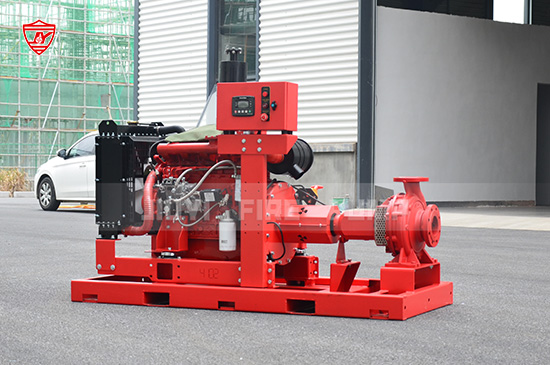Fire pumps play a critical role in fire protection systems, ensuring adequate water flow during emergencies. However, a common issue that can disrupt their performance is cavitation. Understanding cavitation, its causes, and how to prevent it is vital for maintaining reliable fire pump operations.

What Is Fire Pump Cavitation?
Cavitation occurs when water pressure at the pump's inlet drops below the liquid’s vapor pressure, causing vapor bubbles to form. These bubbles collapse violently as they move through the pump, potentially damaging impellers, reducing efficiency, and shortening the pump's lifespan.
Causes of Fire Pump Cavitation
- Inadequate Net Positive Suction Head (NPSH): When the suction pressure is too low to prevent vaporization.
- Improper Pump Sizing: A pump too large for the system may cause suction issues.
- Obstructions in Suction Lines: Clogged or blocked suction pipes reduce water flow.
- High Suction Lift: If the pump is positioned too far above the water source, cavitation is more likely.
Effects of Cavitation on Fire Pumps
- Decreased pump efficiency
- Excessive noise and vibrations
- Erosion and damage to pump components
- Increased maintenance costs and downtime
How to Prevent Fire Pump Cavitation
- Ensure Proper NPSH: Match the pump’s requirements to the system’s available NPSH.
- Inspect and Maintain Suction Lines: Regularly check for clogs, leaks, or damage.
- Install the Pump Correctly: Position the pump closer to the water source when possible.
- Use a Variable Speed Drive (VSD): Adjust pump speed to match demand and reduce stress on the system.
- Conduct Regular Maintenance: Monitor for early signs of cavitation and address issues promptly.
Conclusion
Cavitation can significantly impact the reliability and performance of your fire pumps. By understanding its causes and implementing preventative measures, you can extend the lifespan of your equipment, reduce downtime, and maintain the integrity of your fire safety system.
Need help selecting the right fire pump for your application? Contact us today for expert advice and high-quality fire pumps



